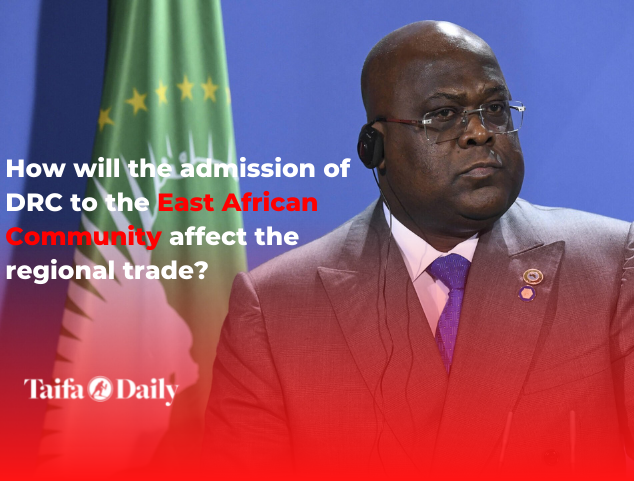The Democratic Republic of Congo (DRC) in 2019 expressed interest in joining the East African Community (EAC) regional bloc to tap into the benefits of the regional trade and expanded markets.
Finally, after back and forth procedures and due diligence to ensure DRC has all the requirements to join the bloc, on March 29, 2022, DRC shall complete becoming a member of EAC.
DRC admission to the regional block will benefit other members and DRC itself. DRC is a large country with a population of 90 million people, and it is one of the biggest countries in Africa, well-endowed with natural resources and has the world’s second-largest rainforest.
Many observers consider DRC’s interest in EAC as a game-changer to the bloc’s trade performance given its natural resources base and a vast consumer market of 81 million people (almost half the current EAC population).
Noteworthy, DRC is the world’s biggest producer of cobalt, a significant component in the manufacture of rechargeable batteries for electric vehicles, and Africa’s leading copper producer.
It is also a significant producer of gold, diamonds, uranium, coltan, oil and other precious metals, making it one of the most resource-rich countries in the world. These resources, coupled with appropriate transport infrastructure, can boost the EAC’s industrialisation agenda through reduced transactional costs for labour from lower- to higher productivity activities.
DRC’s membership in the EAC is poised to increase Rwanda’s exports by USD 81 million, Uganda (USD 60 million), Tanzania (USD 50 million), Kenya (USD 42 million) and Burundi (USD 6 million).
In terms of per percentage share, the trade liberalisation will increase current trade with Uganda by 30 per cent, 24 per cent for Rwanda, 34 per cent for Tanzania, 29 per cent for Kenya and 33 per cent for Burundi.
Notably, most of the increase in this trade is attributed to trade creation (due to new exports by EAC to DRC initially sourced from non-EAC countries).
A critical analysis of the vital sectors likely to boost export trade with DRC shows that the bloc harvests the most significant gains in agriculture, agro-processing (food and beverages), mineral products and metal industries.
Specifically, Tanzania and Rwanda have the largest export of agricultural products. Uganda and Tanzania will reap the most considerable trade benefits from agro-processing, while concerning metal products (iron and steel); Kenya and Uganda have the highest trade gains.
DRC’s membership is likely to positively affect the bloc’s exports, mainly driven by trade creation, as EAC is poised to be a cheaper source for DRC’s imports than the rest of the world.
Nonetheless, these exports are primarily dominated by primary goods rather than sophisticated manufactured goods.
Conclusively, EAC Partners states should adopt a long term strategy of building their capacity to produce high technology products such as machinery, electrical equipment and motor vehicles, which are DRC’s leading imports to overcome supply constraints.
For more details, please visit Research.


